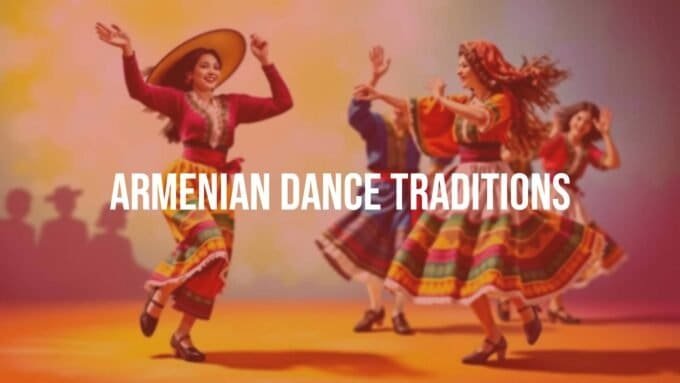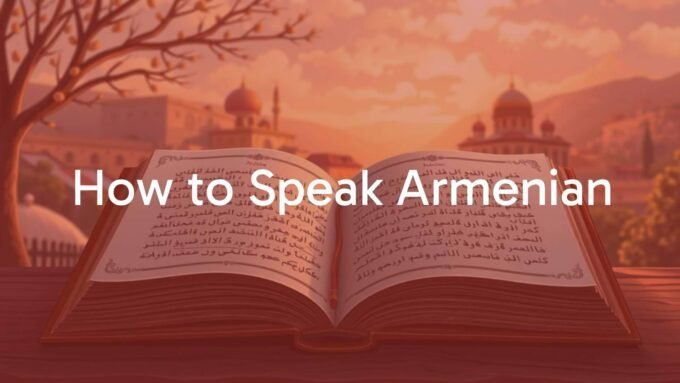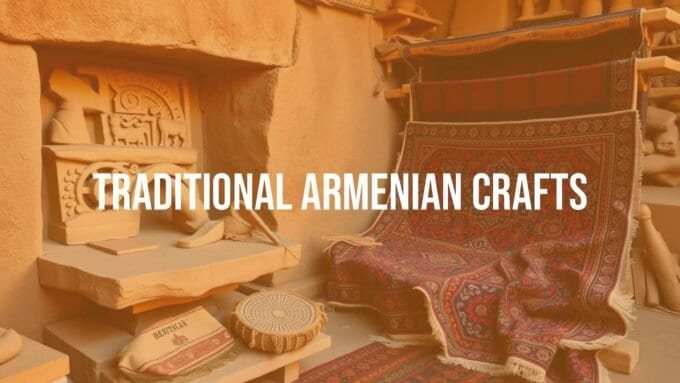Armenian embroidery patterns are more than decoration. They hold stories of history, faith, and identity, stitched by hand over many centuries. These designs carry symbols and methods that act like a visual language. They speak about old beliefs, taste, and the strength of a people. From early geometric shapes to floral borders and church symbols, each stitch links past and present, passing on skills and meaning through time, even in hard periods.
To learn about Armenian embroidery is to learn about the people who made it. This craft grew in the Middle Ages and into today, changing with the times while keeping its character. You will see it on clothing, home linens, and church garments. Armenian patterns give clear insight into daily life and spiritual life, stitched into cloth. This article will explore its history, regions and styles, common motifs, techniques, and how it stays alive today.

What Are Armenian Embroidery Patterns?
Defining Armenian Embroidery Patterns
Armenian embroidery patterns are the distinctive designs, motifs, and stitches used in Armenian needlework. They are not random decorations. They carry meaning, often tied to religion, history, and taste that families passed down over generations. In the past, Armenian women in many places practiced fine needlework at home, so embroidery became a core skill and a visible part of everyday culture.
Designs range widely, from strict geometric layouts to soft plant forms. They appear on clothing and costumes, table linens and cushions, and church textiles. Each piece holds the maker’s time and skill. It is a physical record of memory and creativity, showing how culture can live on even when people are far from home.
How Armenian Embroidery Differs from Other Traditions
Embroidery exists worldwide, but Armenian work stands out in clear ways. It is closely tied to Armenian history and faith. Many pieces include church symbols like the Armenian Cross (Khachkar), and pre-Christian geometric signs, showing a long thread of belief and art together.
Style names often come from the place where they formed-“Van’s thread,” “Aintab’s thread,” and so on-pointing to local roots. Each area has its own stitches, materials, and design ideas. Some stitches demand very exact work, like the Marash “woven” stitch, where the thread passes the same line four times, or the floral-only style of Ourfa. Armenian embroidery favors fine detail and meaning, turning a textile into both art and record.
What Is the History and Cultural Importance of Armenian Embroidery?
Armenian Embroidery through the Centuries
Armenian embroidery has ancient roots and grew strongly in the Middle Ages. Different regional schools took shape, each with its own look and techniques. Traditions kept developing, taking in new ideas while staying clearly Armenian.
Over time, embroidery decorated everyday clothes and royal outfits, home textiles, and church items. Church schools, monasteries, and home teaching kept the knowledge moving from mother to child. In times of loss and movement, especially in the diaspora, embroidery helped keep memory and identity alive, carrying meaning in thread and cloth.
Significance of Patterns in Armenian Heritage
Patterns carry identity, belief, and memory. Motifs-plants, shapes, and religious signs-hold layers of meaning. The Armenian Cross, or Khachkar, often eight-pointed, reaches back before Christianity and can point to the eight directions. It marks faith and endurance. Many pieces include a sun symbol at the center, joining old meanings with Christian images.
These patterns also reflect the Armenian story-lives linked together, holding onto a clear identity through change. When people lost homes, textiles helped keep culture present. Motifs connect to carpets, ceramics, and other arts, showing shared ideas across crafts. Embroidery patterns act like a living archive, saving stories and styles for new generations.
What Are the Main Styles and Regions of Armenian Embroidery?
Across Armenia and Armenian communities, many local styles developed. Names often match the town or region. Each school shows favorite stitches, motifs, and materials. Together they build a wide map of Armenian needlework.
| Style | Origins | Signature stitch/technique | Common motifs | Threads/Fabrics | Look |
|---|---|---|---|---|---|
| Marash | City of Marash | “Woven” interlaced stitch; thread passes same line 4 times | Geometric forms, floral, symbols | Thin twisted cotton on cotton or velvet | Raised, textured lines; strong color contrasts |
| Ourfa | Region of Ourfa | Flat stitch; floral-only vocabulary | Stylized blossoms, leaves, vines | Silk threads, sometimes gold, on silk or fine cotton | Smooth surface; elegant, garden-like feel |
| Van | Historic Van/Vaspurakan | Fine embroidery and lace with ancient symbols | Cosmic signs, plants, animals, geometry | Varied; fine lace and threadwork | Delicate lacework with symbolic imagery |
| Sebastia (Svaz) | Region of Sebastia | “Tars” (backward) stitch formed from underside | Geometric borders and florals | Silk, wool, metallic on silk/linen/cotton | Clean outlines; structured borders |

Marash Embroidery Characteristics
Marash work is known for very exact interlacing. The “woven” stitch follows a strict order, the thread crossing the same path four times. Only the first two rows attach to the cloth; later rows weave over them, creating a raised effect. Errors show right away, so the work demands steady hands and a clear plan. Artists often use thin twisted cotton on cotton or velvet. Common colors include red, blue, green, and gold.
Ourfa Embroidery Techniques
Ourfa embroidery uses a flat stitch and focuses only on floral forms. Colored silk threads, sometimes with gold, are stitched on silk or fine cotton. The style favors calm, stylized flowers and vines. In the past, women stitched cloths, blankets, handkerchiefs, curtains, and clothing parts-often for a dowry. Many fine pieces were given to churches as a vow.
Van Embroidery Motifs
Van work is among the oldest Armenian styles. Its reach went far, to Cilicia, Cappadocia, Tayk, and Constantinople. Van lace is famous, keeping very old signs of the cosmos, nature, and geometry. These laces and embroideries carry meaning and link the wearer to ancestral ideas.
Svaz and Sebastia Pattern Features
Sebastia (Svaz) carries strong local tradition. The “Sebastia-Swazi” or “Tars” stitch forms the design from the back, bringing color to the front in a planned shape. Patterns often show geometry, florals, and layered borders. Makers used silk, wool, and metal threads on silk, linen, and cotton. Choice of material and color often matched the item’s use and the owner’s status.
Other Notable Regional Styles
Ayntap is often called the most delicate school. It removes threads in both directions to build a grid, then embroiders within that mesh. Tools like dumbbells and linear platformers help form diamonds, squares, and triangles with even symmetry. Other areas, including Cilicia and Syunik-Artsakh, developed their own materials and stitches. Together, these schools show how widely Armenian women shared needlework knowledge and built many designs.
Which Common Motifs and Symbols Are Used in Armenian Embroidery Patterns?
Armenian embroidery uses a shared set of signs that carry cultural and spiritual meaning. Designs do more than decorate. They keep old ideas and stories alive in thread.
Geometric and Floral Designs
Geometric motifs are a core part of Armenian work and often go back before Christianity. Makers use:
- Diamonds and lozenges
- Squares and grids
- Triangles and star forms
- Balanced, repeating layouts
These shapes can show order and balance. At times they stand in for plants, buildings, or cosmic ideas in stylized form.
Floral designs are just as common. Plant motifs appear both stylized and natural:
- Blossoms and buds
- Leaves and stems
- Vines and wreaths
Flowers can stand for life, beauty, growth, and fertility. Some stitching methods shape how the plant forms look, especially in older styles.
Crosses, Khachkars, and Religious Symbols
Armenia’s Christian roots show in many pieces. The Armenian Cross, or Khachkar (“cross-stone”), is central. Embroidered Khachkars often show an eight-pointed cross, a design linked to the eight directions, joining pre-Christian ideas with Christian faith. Many crosses include a sun sign in the center.
Other church images also appear, especially on church textiles or vowed gifts: scenes from the Bible, saints, and patterns inspired by church stonework and carving. These stitches show faith and continuity, joining cloth to prayer and memory.
Animal and Folklore Motifs
Animal and bird motifs add another layer. Birds may stand for freedom or spirit. Other animals can suggest strength, wisdom, or protection. These often come from myths and stories.
Folk images also include baskets, jugs, and buildings. These motifs root the designs in daily life and place, mixing the sacred with the ordinary. Together-geometry, plants, animals, faith, and folklore-Armenian embroidery speaks with a wide and human voice.
What Are the Typical Techniques and Materials for Armenian Embroidery?
The look of Armenian embroidery comes from the mix of stitches and the materials at hand. Certain stitches give certain textures. Local supply shaped thread and fabric choices.
Stitch Types Unique to Armenian Embroidery
Armenian work uses many stitches, from basic to very complex. Names often match their region. Examples include:
- Marash “woven” interlaced stitch: the thread travels the same line multiple times; first rows anchor to the fabric, later rows weave over, making a raised texture.
- Sebastia-Swazi (Tars/backward) stitch: the motif is formed from the underside so colored threads show on the surface as the design.
- Ayntap grid work: threads are withdrawn to form a mesh, then embroidered with fine geometry.
- Foundational stitches: herringbone, fishbone, and darning, often used as bases for interlacing.
These methods allow many textures and effects. Accuracy matters, since a small slip can break the pattern.
Threads and Fabrics Used
Material choice shapes both look and wear:
- Threads: silk (fine shine), wool (warm body), metallic (gold or silver gleam), cotton (including thin twisted cotton).
- Fabrics: silk, linen, cotton, and velvet for select styles like Marash.
Makers match thread and fabric so tight interlacing covers the ground well, with color sitting cleanly on the surface.
Choosing Colors and Their Meanings
Color carries both beauty and meaning. Common choices, with frequent readings, include:
- Red: life, passion, protection
- Blue: spirit, wisdom, sky
- Green: nature, growth, fertility
- Gold: value, holiness, royalty
These colors, often used in strong contrasts, help the motifs speak clearly on the cloth.
How Can You Access and Use Armenian Embroidery Patterns?
It is easier than ever to find Armenian patterns and learn the techniques. You can work with print kits or download digital guides and join online classes.
Printed Pattern Cards and Kits
Printed cards and full kits are a clear way to start. They often include drawn designs and step-by-step notes. A “Set of 10 Bilingual Armenian Embroidery Pattern Cards” can give a range of classic motifs. Physical kits such as “Embroider Your Own Armenian Tote Bag” (£36.00 GBP) and regional sets like “Marash Embroidery Kit,” “Van Embroidery Kit,” “Svaz Embroidery Kit,” and “Ourfa Embroidery Kit” (each £29.00 GBP) appear often, though they may sell out. “Kids Embroidery Kits” (£26.00 GBP) help younger learners. These sets usually include fabric, thread, and clear instructions.
Digital Armenian Embroidery Patterns
Digital files give instant access and easy printing. You can find “DIGITAL Svaz Embroidery Kit,” “DIGITAL Marash Embroidery Kit,” “DIGITAL Ourfa Embroidery Kit,” and “DIGITAL Van Embroidery Kit” (each about £19.00 GBP). Individual patterns are also offered, such as the “Van Tablecloth Digital Pattern” (£23.00 GBP), “Mamig Babig Digital Embroidery Pattern” (£12.00 GBP), and “Svaz Khachkar Digital Pattern” (£9.00 GBP). “Armenian Inspired Cross Stitch Patterns” (£15.00 GBP) adapt classic ideas into cross-stitch charts.
Online Armenian Embroidery Classes
Online classes give structure and community. A “4-Part Online Introduction to Armenian Embroidery Course” (£82.00 GBP) can provide a full overview across styles and basic skills. Focused classes-“Introduction to Ourfa Embroidery Online Class,” “Introduction to Svaz Embroidery Online Class,” and “Introduction to Marash Embroidery Online Class” (each £23.00 GBP)-teach the details of one school. Sessions may be live or recorded, with Q&A and group sharing. Teachers such as Emma Welty and Araks Mirzoyan lead these lessons, reaching students worldwide.

Applications for Personal and Decorative Projects
Once you have patterns and skills, you can apply them widely:
- Clothing: shirts, blouses, jackets, and dresses with borders or panels
- Accessories: pendants, brooches, and hair pieces
- Home: tablecloths, runners, cushions, and wall hangings
Contemporary artists, like Lizzy Vartanian, also play with color and scale, reimagining classic shirt patterns as table linens in bright new palettes.
What Are Popular Armenian Embroidery Products and Projects?
Armenian embroidery fits many uses, from wearables to heirloom home items. Each piece carries design and meaning you can see and touch.
Bags and Clothing
Embroidered bags and garments are common projects. The “Embroider Your Own Armenian Tote Bag” (£36.00 GBP) brings classic motifs to an everyday item. Shirts, dresses, and jackets become a canvas for borders, yokes, or panels. In the past, both daily wear and festive clothing used these designs. Today’s makers mix classic and new looks to create pieces that feel personal and rooted.
Home Decor: Tablecloths and Cushions
Home textiles show embroidery beautifully. Tablecloths-such as those based on the “Van Tablecloth Digital Pattern” (£23.00 GBP)-turn a table into a center of art. Cushions with geometric or floral motifs add color and texture. Bed covers, pillowcases, and runners also make fine long-term projects that families can keep and pass down.
Jewelry and Accessories
Small items let you wear the craft every day. Pendants, brooches, and earrings can hold tiny, precise motifs. Makers often combine embroidery with other materials for modern designs that still echo Armenian roots.
Children’s and Beginners’ Kits
To help new stitchers learn, “Kids Embroidery Kits” (£26.00 GBP) and beginner-friendly courses like the “4-Part Online Introduction to Armenian Embroidery Course” (£82.00 GBP) and regional kits (each £29.00 GBP) keep things simple and welcoming. Clear steps and pre-chosen designs build confidence and skill.
How Is Armenian Embroidery Maintained and Passed Down?
Armenian embroidery lives on through careful care of old pieces and active teaching of new stitchers. Families, museums, and teachers all play a part.
Preserving Embroidered Textiles
Museums help protect and share old textiles. The Armenian Museum of America holds the largest Armenian textile collection in North America, with more than 3,000 items donated by many families. Staff conserve these textiles, make them available for study, and share them through exhibits on site and online. Researchers write about them, adding to what we know. Each piece carries the maker’s skill and time.
Families also keep heirloom cloth at home, storing and documenting pieces with photos and notes. These efforts keep memory alive, even as fabrics age.
Transmission through Generations and Communities
Most learning happens person to person. In the past, Armenian girls learned needlework at home, as well as in church schools, monasteries, and workshops. This helped skills spread across regions and into the diaspora.
Today, online classes and community workshops continue that path. Teachers like Emma Welty, who has taught janyak to many ages, and Araks Mirzoyan, who combines history with Marash technique, reach learners worldwide. On Instagram, accounts such as ArmenianEmbroidery by Lizzy Vartanian share patterns, meanings, and history. Stitch circles in cities like Yerevan and London give people a place to learn, share stories, and build identity together.
Where Can You Find Resources and Inspiration for Armenian Embroidery Patterns?
Many sources can help you learn, practice, and get inspired: museums, books and magazines, and active online groups.
Museums and Cultural Centers
Museums display historic pieces and provide context. The Armenian Museum of America offers the largest collection in North America, with exhibits that show regional styles and careful stitch work. Visits-virtual or in person-let you study motifs, color use, and technique up close. Cultural centers and community groups often host talks and demos as well.
Books, Magazines, and Online Galleries
Printed guides and online archives offer patterns and history. A key book is “Armenian Needlelace and Embroidery” by Alice Odian Kasparian. Older magazines like the August 1923 issue of The Modern Priscilla include historical patterns. PieceWork magazine has covered Armenian embroidery in issues such as March/April 2005 and Spring 2024, and subscribers can read the archive online.
Web galleries and dedicated sites show patterns and finished work from past and present. On social media, artists share process videos, charts, and research, creating a global community for learners and experts.
Community Workshops and Exhibitions
Workshops give hands-on practice with guidance from skilled embroiderers. Sessions often start with a short history and meaning of motifs, then move to stitching. Exhibitions in galleries or festivals display both classic and modern pieces, showing many ways to use Armenian motifs today. These events build skills and community, helping the craft stay active for the next generation.















Leave a comment